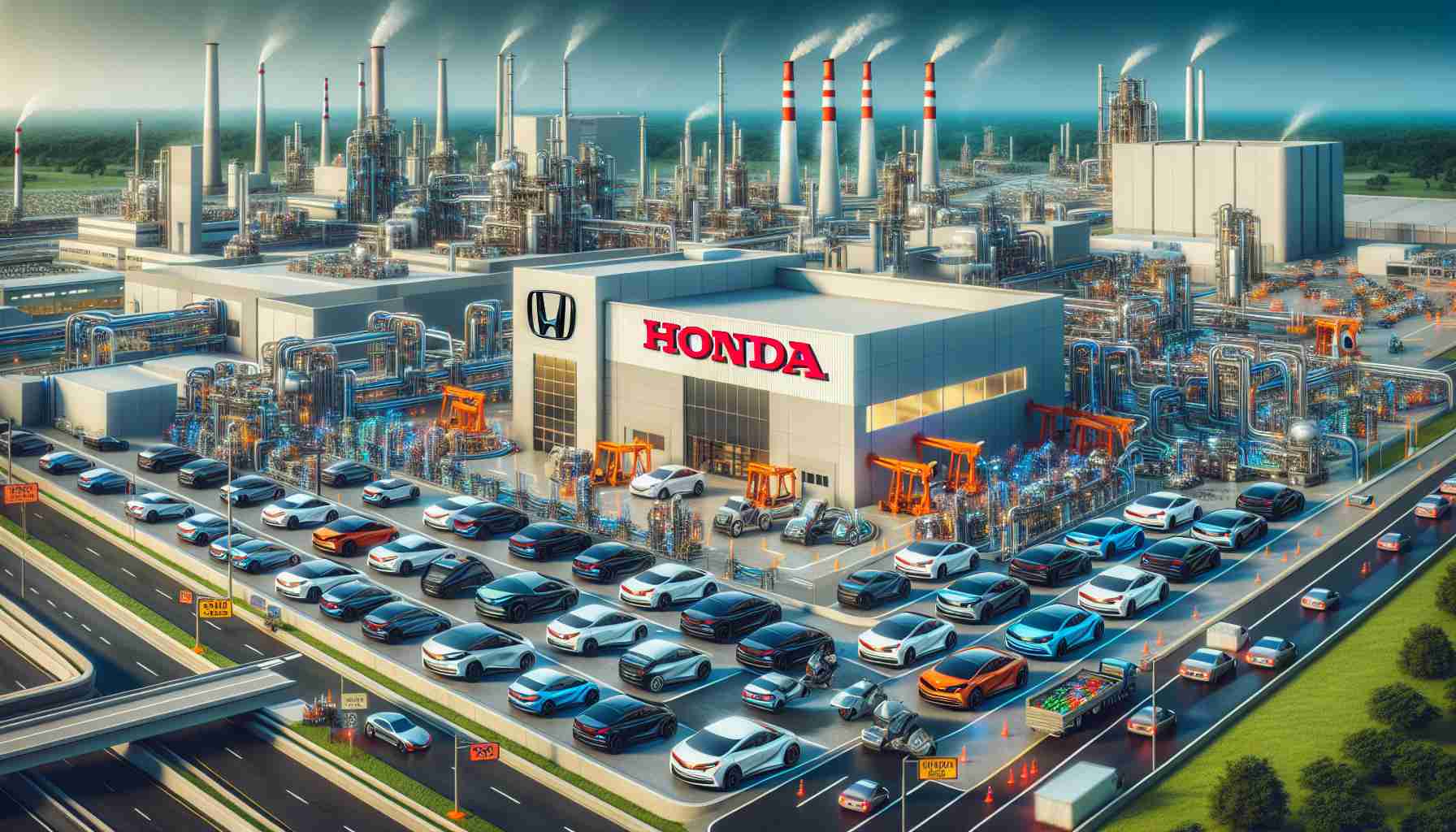- Honda is investing $1 billion in Ohio to innovate vehicle manufacturing and promote sustainability.
- By late 2025, the Marysville Auto Plant will produce internal combustion, hybrid, and battery-electric vehicles on the same assembly line.
- The Acura RSX SUV will debut as Honda’s first battery-electric model, blending luxury with eco-friendliness.
- The Anna Engine Plant is integrating advanced technologies like friction stir welding for battery production.
- A new EV Battery Plant in Jeffersonville, in collaboration with LG Energy Solution, aims to enhance manufacturing efficiency.
- Honda’s goal for 2040 is to achieve 100% zero-emission vehicle sales, contributing to a sustainable future.
- This initiative is expected to create new job opportunities for Ohio workers.
In a bold move signaling a shift in automotive technology, Honda is pouring a staggering $1 billion into Ohio, poised to transform vehicle manufacturing and sustainability. By late 2025, the Marysville Auto Plant is set to become a powerhouse, producing internal combustion, hybrid, and battery-electric vehicles on the same assembly line. This groundbreaking versatility is not just innovative—it’s a game changer for the industry.
Anticipation is high as the upcoming Acura RSX SUV steps forward as the first battery-electric model, generating buzz for its fusion of luxury and eco-friendliness. But that’s not all; just an hour away, the Anna Engine Plant is upgrading with cutting-edge technology like friction stir welding, revolutionizing battery pack production. This modernization is crafting a new chapter in Honda’s legacy, blending seasoned expertise with fresh innovation.
Meanwhile, a massive EV Battery Plant in Jeffersonville, built in collaboration with LG Energy Solution, is reshaping manufacturing efficiency. This synergy aims to meet diverse customer demands while eliminating waste. Excitement is palpable among the 4,200 Ohio-based employees as they engage in novel processes and exchange expertise.
With a daring vision set for 2040—where 100% of sales will be zero-emission—Honda is not just enhancing vehicle production but also sowing the seeds for a greener future and new job opportunities in Ohio. In this electrifying venture, Honda is not just building cars; they are paving the way toward a sustainable automotive future that everyone can rally behind!
Honda’s $1 Billion Investment: Transforming the Future of Automotive Manufacturing
A New Era for Honda: Comprehensive Insights
In a significant shift towards sustainability and innovation, Honda’s recent investment of $1 billion in Ohio is set to elevate its manufacturing capabilities and embrace cutting-edge technologies. The developments at the Marysville Auto Plant and the establishment of an EV Battery Plant signal not only an evolution in production but also a commitment to greener practices.
# Key Features of Honda’s Initiative:
1. Multi-Production Capability: By late 2025, the Marysville Auto Plant will uniquely produce internal combustion, hybrid, and battery-electric vehicles on the same assembly line, enhancing efficiency and flexibility.
2. Cutting-Edge Technology: The Anna Engine Plant’s adoption of friction stir welding represents a leap forward in battery pack production, optimizing performance and sustainability.
3. Strategic Partnerships: The collaboration with LG Energy Solution to develop the Jeffersonville EV Battery Plant aims to meet escalating demand for electric vehicles while prioritizing resource efficiency.
4. Long-Term Vision: Honda targets 100% zero-emission sales by 2040, underlining its commitment to sustainability and innovation in the automotive sector.
Pros and Cons of Honda’s New Manufacturing Strategy
# Pros:
– Sustainability: Enhanced production processes focused on electric vehicles promote an eco-friendly approach.
– Job Creation: The new plants are expected to create thousands of jobs, driving economic growth in Ohio.
– Technological Advancement: The incorporation of modern manufacturing methods improves product quality and reduces waste.
# Cons:
– Initial Investment Risk: A large upfront investment might pose financial risks if consumer demand does not materialize.
– Transitional Challenges: Shifting from traditional to electric manufacturing could face resistance from existing workforce and infrastructure.
Market Forecast: Electric Vehicle Dominance
As defined by industry trends, the electric vehicle market is expected to grow significantly over the next decade. Analysts predict that by 2030, electric vehicles will account for approximately 40% of total vehicle sales in the U.S., making Honda’s pivot to electric vehicle production a timely and strategic move.
Related Questions
# 1. What impact will Honda’s investment in Ohio have on local economies?
Honda’s investment is set to significantly bolster local economies by creating job opportunities and stimulating related industries, like supply chains and service sectors.
# 2. How will Honda ensure the quality and efficiency of its new manufacturing processes?
Honda will leverage advanced technologies such as friction stir welding, alongside rigorous quality control processes, to ensure the efficiency and reliability of its manufacturing outputs.
# 3. What are the broader implications of Honda’s commitment to zero-emission vehicles by 2040?
The broader implications include influencing industry standards towards sustainability, encouraging competitors to follow suit, and pushing for stronger governmental policies on electric vehicle adoption and infrastructure development.
For further insights into Honda’s initiatives, visit Honda’s official website.



















